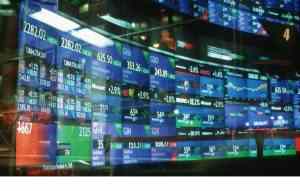

Always be sure to analyze the underlying business before purchasing a stock to get a sense of the company’s competitive position and valuation. The potential for high returns does come with greater risk, however. Small companies may not be profitable and may have to rely on outside funding to sustain their operations.
Hence, those shareholders are “preferred” over common stockholders. But not all stocks are the same, and they don’t all offer the same perks. They may trade under different tickers, such as GOOGL and GOOG, and have different voting rights. That’s why having some cursory knowledge of different types of stock is important. NerdWallet, Inc. is an independent publisher and comparison service, not an investment advisor.
IPO stocks are generally treated as up-and-coming stocks, despite the fact that they may turn volatile. IPO stocks attract the interest of investors even if the investment community has no consensus about their growth and profit potential. A private stock needs at least a year after it becomes available to the public in order to retain its IPO stock status. Shares of well established companies with a market capitalization of $10 billion or more are known as large-cap stocks. The net worth of such companies can exceed the economic conditions and capacity of some small countries. To find these shares, value investors look for companies with a low price-to-book ratio or low P/E ratio as well as certain other factors.
Stock market basics: 9 tips for beginners
ESG stocks allow you to invest in companies whose corporate values align with your personal values. However, since these companies are well-established, expect the cost-per-share to be higher. And keep in mind that blue chip stocks aren’t likely to experience meteoric growth. One downside of large-cap stocks is that companies of this size grow much more slowly than newer, smaller companies. That means investors shouldn’t expect outsized returns from investing in large-cap stocks. One type of shares—class A stock, for instance—would only be issued to company founders or key executives.
Companies issue stock in order to raise capital to finance future growth. Unlike cyclical stocks, defensive stocks are not characterized by impactful fluctuations in demand. A grocery store chain can serve as an excellent example of non-cyclical stock, as people will still buy food even if times are tough. Defensive stocks show impressive results as safe-haven assets during downturns, while cyclical stocks will definitely outperform during a bull market.
However, it’s important for investors to know the different types of stocks available, understand their unique characteristics, and be able to determine when they may represent a suitable investment. Below, we outline the various stock categories, aiming to take the confusion out of differing stock classes on offer to investors. Even though investors usually consider large-cap inputs to be relatively low risk stocks than small cap stocks, conducting thorough research before purchasing any type of stock is a wise decision. Such financial vehicles as mutual funds and exchange traded funds diversify your portfolio and make it possible to invest in several large-cap entities at once. Thus, with mutual funds, you don’t have to spend much time researching particular stocks to make a safe investment.
Growth stocks are one of the most exciting areas of the stock market, but buying them and earning high returns isn’t as simple as the name suggests. Because high-growth companies can be very rewarding to investors, their prices can sometimes get bid up to overvalued levels where investors won’t earn satisfactory returns. But if you’re able to purchase a growth stock at a compelling price, you may be able to ride its success for many years to come.
Penny Stocks
Investors can add cyclical stocks to their portfolios by purchasing the Vanguard Consumer Discretionary ETF . If a company goes bankrupt and its assets are liquidated, common stockholders are the last in line to share in the proceeds. The company’s bondholders will be paid first, then holders of preferred stock. If you are a common stockholder, you get whatever is left, which may be nothing. There are multiple categories and classifications of stocks, but investors need to be aware of the most popular ones in order to employ basic investment strategies.
They have a long successful track record of generating dependable earnings and leading within their industry or sector. Conservative investors may top-weight their portfolio with blue-chip stocks, particularly in periods of uncertainty. Several examples of blue-chip stocks include computing giant Microsoft Corporation , fast-food leader McDonald’s Corporation , and energy bellwether Exxon Mobil Corporation .
Foreign stocks trade worldwide on different exchanges; in the USA, they are traded in the form of ADRs . They are traded on various stock markets and range from the smallest publicly traded companies to industry giants, such as Intel or Netflix . Value stocks are, for lack of a better term, a value for investors, as they may be undervalued by the market because a company may not be as new or exciting as a firm in growth mode.

Certain businesses have greater exposure to broad business cycles, and investors therefore refer to them as cyclical stocks. For purposes of distinguishing domestic U.S. stocks from international stocks, most investors look at the location of the company’s official headquarters. Convertible preferred stock is a hybrid security that gives holders the option to convert their preferred stock into common shares after a defined date. There’s no guarantee that the company whose stock you hold will grow and do well, so you can lose money you invest in stocks. In this article, you will learn what high volatility stocks are and how to determine the level of volatility.
Choosing the right stocks for you
Even though the preferred stockholders don’t own any shares, they receive fixed dividend income. The rate of dividend yield on such stocks is either a percentage of the nominal value of shares or an absolute number; it never depends on the company’s revenue. To some extent, preferred stock is similar to the fixed-income securities markets, and this fact also makes them sensitive to changes in interest rates. That’s why this type of stock is attractive to investment professionals only when the interest rates are stable or about to decrease. Income stocks are called such because they drive income for shareholders, usually through relatively high dividend distributions. Income stocks tend to be low-risk investments that offer steady, regular income streams for investors, even if they don’t usually see high amounts of appreciation in terms of share price.
However, common shareholders will always be at the end of the line and will receive the remaining shares of the asset only when the holders of bonds and preferred stocks get theirs. As mentioned, the main types of stock are common and preferred stock. Common stock is something like version 1.0 of stock — it’s often called ordinary stock or ordinary shares, too.
So, whether you’re reading an article or a review, you can trust that you’re getting credible and dependable information. By contrast, non-cyclical stocks, also known as secular or defensive stocks, don’t have those big swings in demand. An example of non-cyclical stocks would be grocery store chains, because no matter how good or bad the economy is, people still have to eat. Non-cyclical stocks tend to perform better during market downturns, while cyclical stocks often outperform during strong bull markets. Cyclical stocks include shares of companies in industries like manufacturing, travel, and luxury goods, because an economic downturn can take away customers’ ability to make major purchases quickly.
Non-Cyclical Stocks
Stocks can be classified by company capitalization, geographical location, and market sectors. Developing substantial investments is impossible without diversification of your portfolio. It’s vital to consider different types of stocks based securities, including those based on perceived quality. These discernible price trends anticipate significant economic growth outside the USA. With this information in mind, investors should seriously consider allocating a portion of their portfolios to international stocks. When investors buy shares in domestic stock mutual funds, the invested money is used to purchase equities issued by the domestic businesses.
Environmental, social and governance is an approach to investing where people only buy the stock of companies that exhibit responsible corporate behavior. Mid-cap stocks may help to diversify your portfolio away from the large-cap stocks most people typically focus on. Broadly speaking, mid-cap stocks may come with less risk than small-cap stocks, but more risk than large-caps, although it will always depend on the specific company you’re looking at.